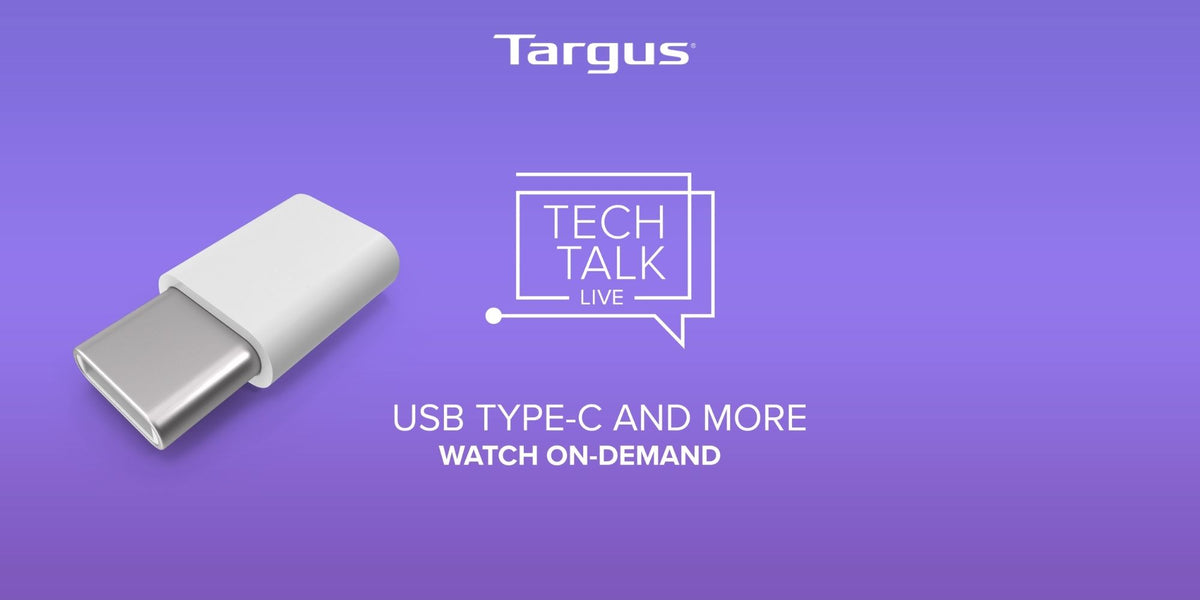Connectivity in 2022: USB Type-C and Beyond

Stay up to date on the latest USB Type-C standards, and beyond.
As the IT world continues to increase adoption of USB Type-C®, it’s important to know about the latest standards.
During our recent Tech Talk webinar, Targus DocKtors, Atif Mahmood and Daniel Betham, shared insights into the newest standard updates in USB Type-C and explored the key changes and updates to connectivity standards, alt-modes, and power.
Read on for a brief Q&A from the session:
What is the biggest confusion around USB Type-C?
USB Type-C is just a connector in USB Mode. However, deciphering between the various USB Type-C receptacle modes, connector labels, and when/how to use them can be confusing. During the webinar, Targus’ DocKtors break down the fundamentals.
How does power work on USB Type-C?
Power Delivery (PD) 2.0 is used for various profiles, ranging from 10W, the default start-up profile, up to 100W, which is the maximum limit for standard A/B connectors. PD 3.0, on the other hand, is more flexible and efficient, as well as backwards compatible to PD 2.0.
What are the ways we use USB Type-C?
There are many ways USB Type-C connectors are used, including VirtualLink Alternate Protocol Mode, Power Delivery, USB 2.0/1.1 Mode, USB 3.0/3.1/3.2 Mode, Ethernet Mode, and many others.
What are the future trends and applications for USB Type-C?
USB Type-C enables smaller, lighter, and more connected devices. Subscribe to industry resources including Targus’ Tech Talk blog, USB IF, HDMI™, Intel®, and DisplayPort™ organizations for news and on-demand content related to new standards and specification updates and check out our entire Master Class series on USB Type-C.


